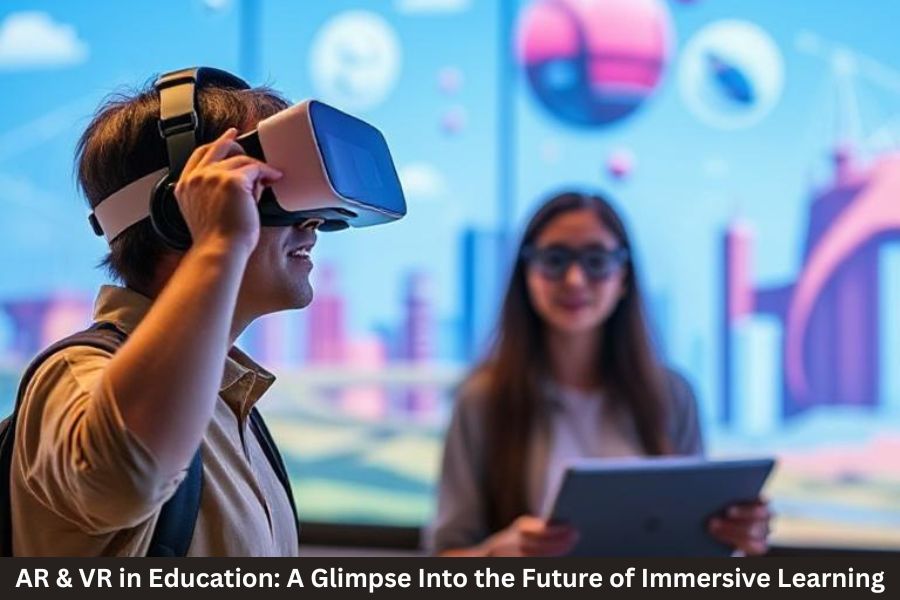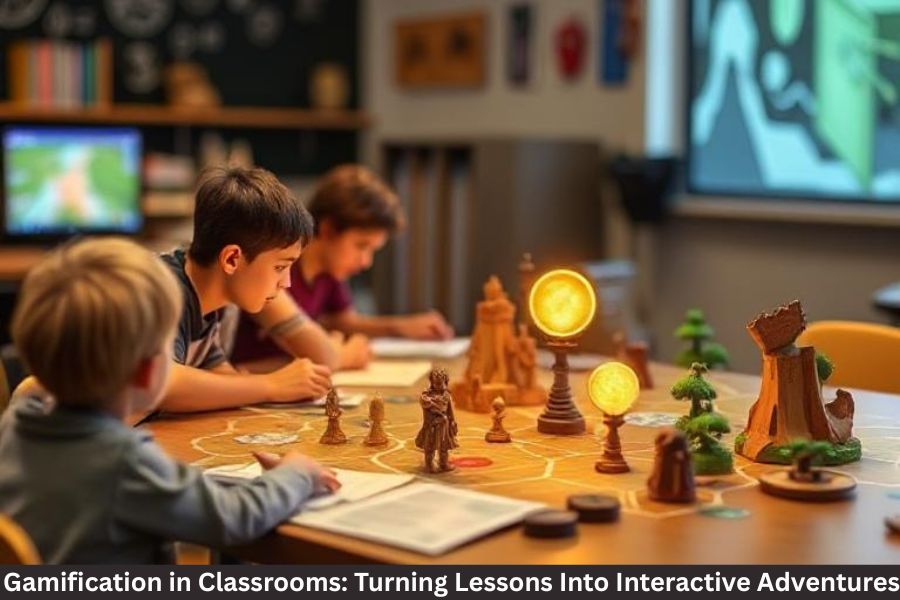Imagine dissecting a frog without the mess—or walking through Ancient Rome while sitting in your classroom. That’s the power of AR and VR in education. Immersive learning is no longer a concept of the future; it’s here, transforming the way students learn and teachers teach.
What Is Immersive Learning?
Immersive learning is a method that leverages technology to engage multiple senses, allowing students to interact with content in 3D environments. It bridges the gap between theoretical knowledge and hands-on experience.
Understanding AR and VR
- Augmented Reality (AR): Enhances the real world by overlaying digital content using smartphones, tablets, or AR glasses.
- Virtual Reality (VR): Creates an entirely simulated environment experienced through VR headsets, isolating users from the physical world.
Key Differences Between AR and VR
| Feature | AR | VR |
|---|---|---|
| Environment | Real-world + digital overlay | Fully virtual |
| Device Needed | Smartphone/Tablet/AR Glasses | VR Headset |
| User Interaction | Enhances reality | Immerses into virtual world |
Why AR & VR Matter in Education
Traditional learning often lacks engagement. AR and VR make abstract concepts tangible, promote interactive learning, and cater to various learning styles—visual, auditory, and kinesthetic.
How AR Enhances the Classroom Experience
- Interactive Textbooks: AR-enabled books bring illustrations to life.
- Language Learning: AR apps show real-world objects with translations.
- Science Labs: Safe simulations of complex experiments.
The Power of Virtual Reality in Learning
- Virtual Field Trips: Visit museums, historical sites, or outer space.
- Medical Training: Students can simulate surgeries in 3D.
- Engineering & Architecture: Build and test virtual structures.
Real-World Applications in Education
- Google Expeditions: Offers AR/VR tours to students.
- Unimersiv: VR platform for history and anatomy learning.
- zSpace: Combines AR with interactive 3D content for STEM subjects.
Benefits of Immersive Learning Technologies
- Boosts student engagement and retention.
- Enhances practical understanding.
- Encourages collaborative learning.
- Makes education more inclusive and accessible.
Challenges and Limitations
- High Costs: Devices and software can be expensive.
- Training: Teachers need support to adopt new tools.
- Accessibility: Not all schools have the required infrastructure.
The Future of AR/VR in Education
Expect more integration of AI, wearables, and cloud platforms into immersive learning. With 5G and edge computing, smoother, real-time AR/VR experiences will become standard.
Top Companies Revolutionizing AR/VR Learning
- Google for Education
- Meta (Facebook Reality Labs)
- Microsoft HoloLens
- ClassVR
- Nearpod VR
How Educators Can Start Integrating AR/VR
- Start with free AR/VR apps like Merge Cube or ExpeditionsPro
- Join professional development communities
- Pilot a single subject like biology or geography before scaling up
Cost Considerations for Schools
- Budget-friendly VR headsets: Google Cardboard, Oculus Go
- Grants & Funding: Many ed-tech grants support immersive learning
- Partner with startups: Early access to software for feedback
FAQs
1. What’s the difference between AR and VR in education?
AR adds digital elements to real-world environments, while VR creates fully immersive virtual experiences.
2. Is immersive learning effective?
Yes, studies show higher retention, deeper understanding, and increased student engagement with AR/VR.
3. Are AR/VR tools suitable for all ages?
Yes, with age-appropriate content. Many platforms offer K-12 and higher education content.
4. Can AR/VR replace teachers?
No. These tools enhance teaching, but human interaction and guidance remain irreplaceable.
5. Is AR/VR education expensive?
Costs are decreasing. Many affordable and freemium tools are now available for schools.



